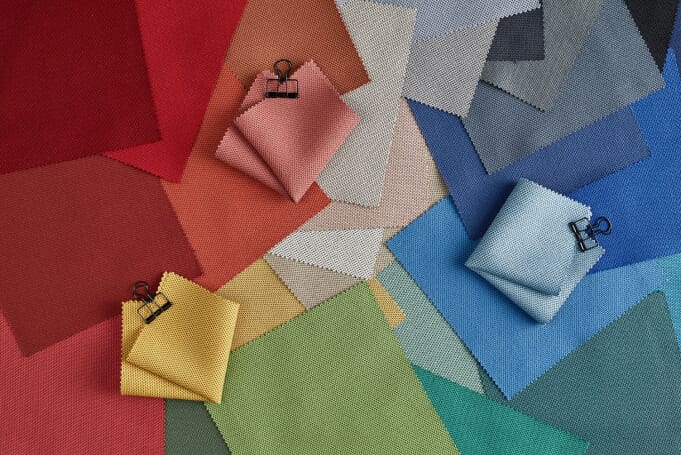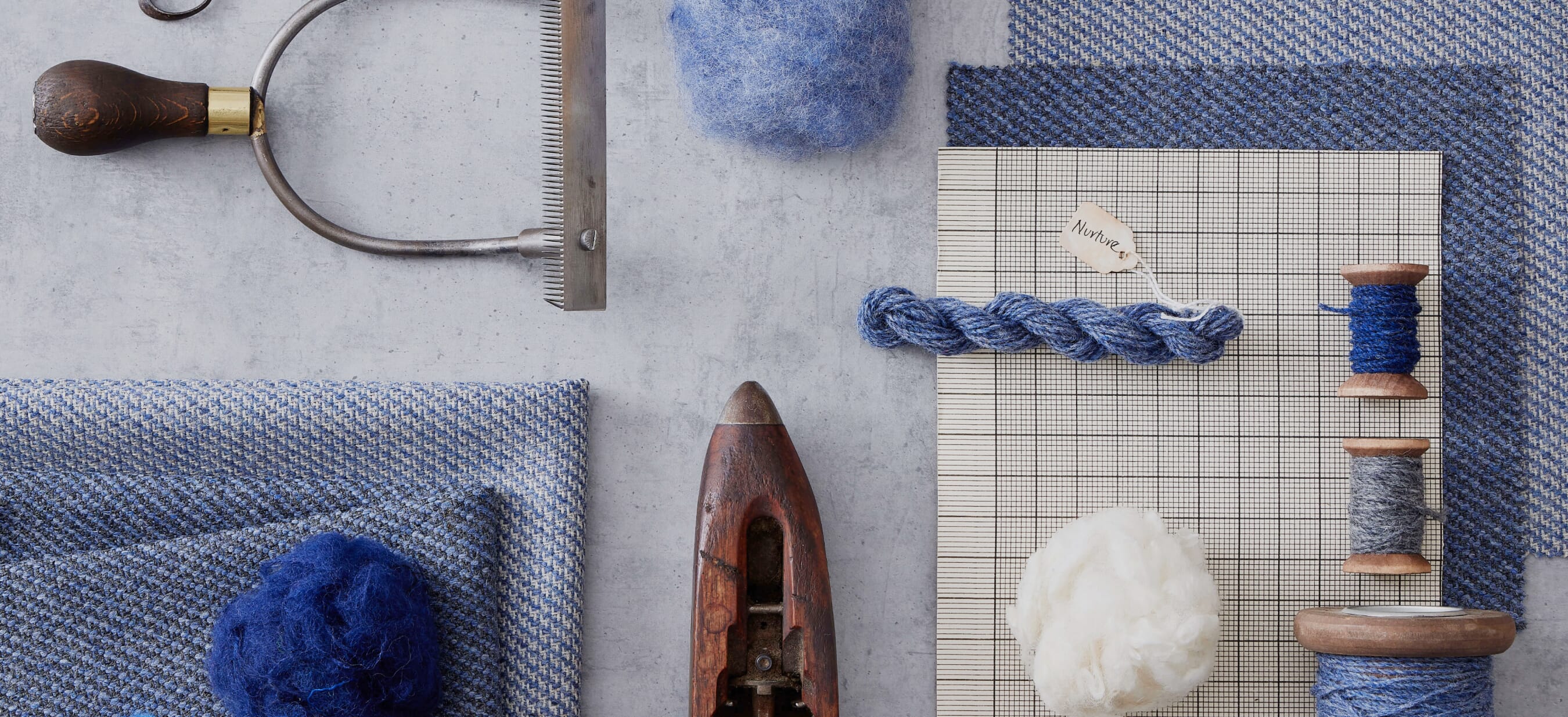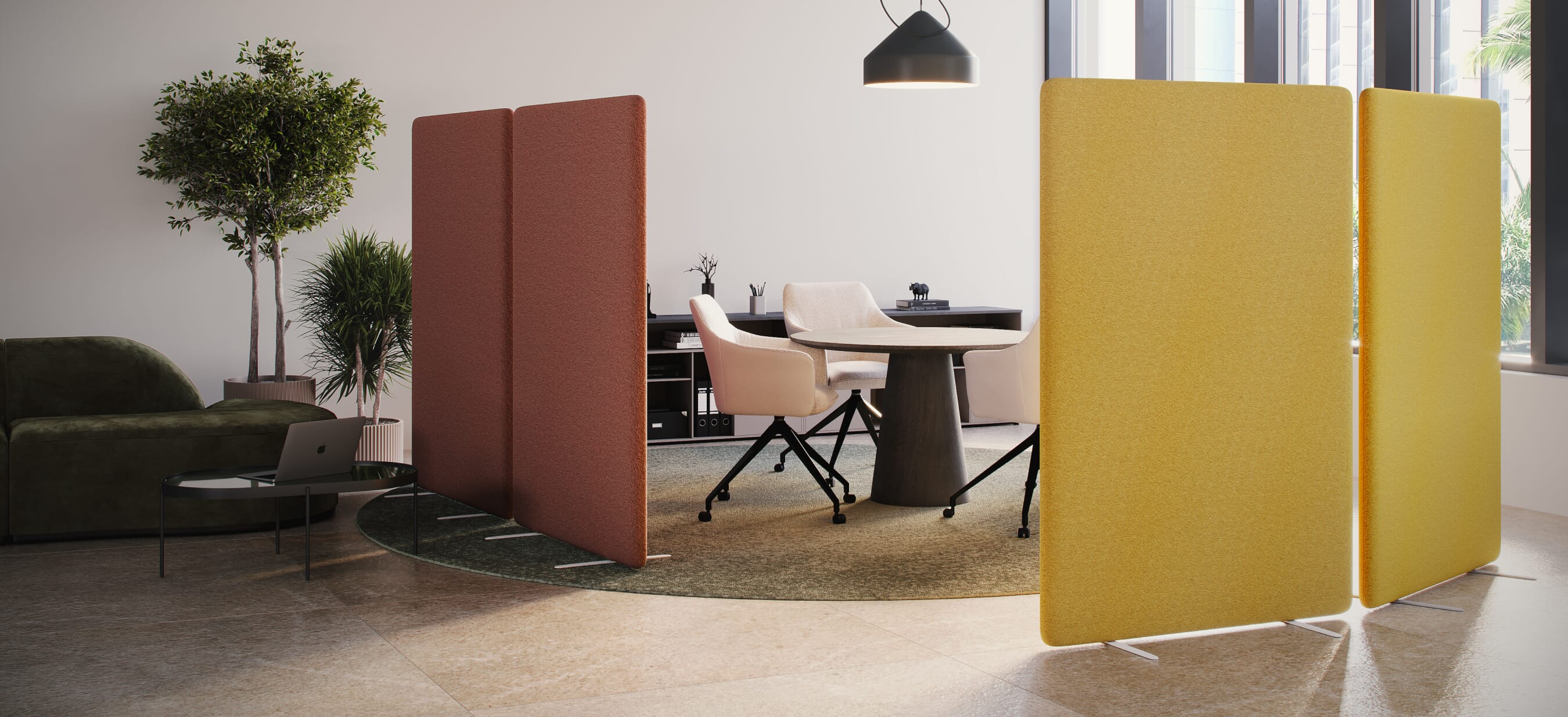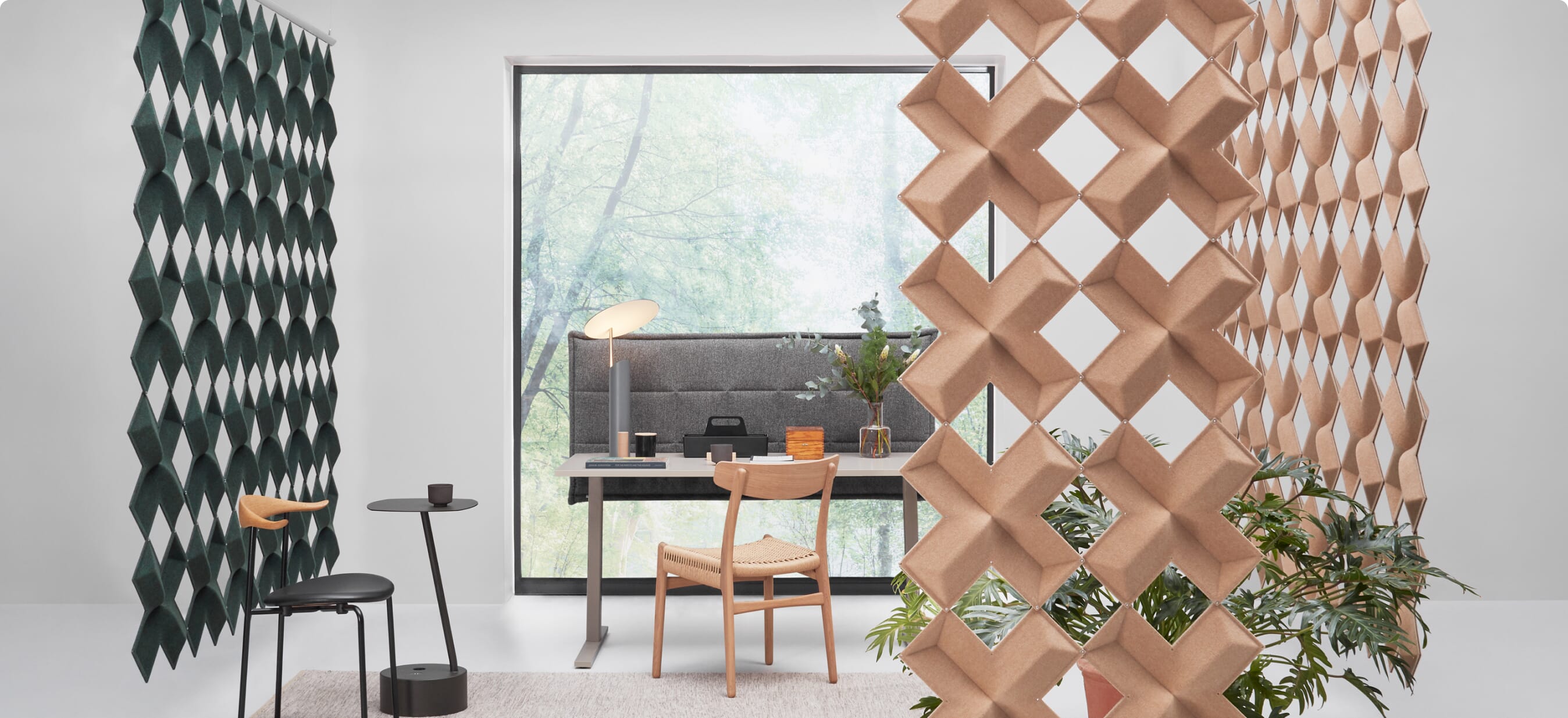Introduction to Acoustic Fabrics
Acoustic fabrics are one of the lesser-known (but most important) parts of your soundscape. They can either act as a barrier or a passage for sound waves. Anyone who wants to tackle reverberations, echoes, and harsh background noises needs to learn about acoustic fabrics.
What is Acoustic Fabric?
To put it simply, acoustic fabrics are comparable to sponges. Porous materials like cotton are excellent sponges. If you put cotton under a microscope, you would find millions of minuscule voids (or pores) that trap energy.
When sound waves hit cotton, the sound is transformed into energy that travels through the fibers. The energy gets trapped inside minuscule voids, which force the vibrations to dissipate. Acoustic materials do not outright eliminate sound waves, but they do lessen them.
Acoustic fabrics are also called acoustically transparent fabrics.

Sound Absorption Coefficients
If you want to learn more about acoustic properties, you need to understand coefficients. A sound absorption coefficient is the fraction of sound energy that a material absorbs at one given frequency. Whatever the material does not absorb (or convert to heat or motion) is reflected off the surface of the material.
In the world of acoustics, manufacturers use a Noise Reduction Coefficient (NRC) scale to measure how effective a material is at absorbing sound. The number ranges from 0 to 1, with 0 being a surface that completely reflects sound waves, and 1 being a surface that completely absorbs sound waves.
When you are searching for an acoustic fabric panel, you need to find a product that has a sound-absorbing coefficient of 0.75 or more. This means that three-thirds of the sound that hits the surface of the material is absorbed and your soundscape is instantly smoother.

Acoustic Fabric & Acoustic Panels
Acoustic fabric is an essential component of acoustic panels. Acoustic panels are comprised of a sound-absorbent core that is upholstered in noise-reducing fabric, plus whatever pieces of installation equipment are necessary.
Without specialist fabric, acoustic panels are just sound-absorbent, dense cores. If sound waves were to hit a bare panel, they would bounce back. This would cause echoes, reverberations, and other harsh soundscape issues.
With specialist acoustic fabric, acoustic panels become complete. The porous sound-absorbent fabric allows sound waves to pass through until they hit the acoustic core, which further forces them to dissipate.
What Fabric for Acoustic Panels?
The best acoustic fabric panels are upholstered in acoustically transparent fabrics. Most fabrics exist on a sliding scale, but there are a few stand-out options that you need to know about.
- Cotton - Cotton fabrics are great natural sound absorbers. This material is incredibly porous, so there are lots of little holes that trap sound vibrations.
- Bamboo - When you think of fabrics, bamboo might not be your first option. Believe it or not, bamboo fabric has great noise-reducing qualities because it has low density. It absorbs a lot of the energy that hits it, which reduces annoying echoes and reverberations.
- Polyester - This man-made fibre has been engineered to be acoustically transparent. On top of that, a lot of polyester fibres are made from recycled materials, which makes them the go-to choice for eco-conscious interior designers.
Acoustic Fabric Spotlight: Camira
Camira fabrics are made from wool, polyester, and bast fibres.
As much as Camira acoustic fabrics are sought-after for their scientific qualities, they also have an aesthetic element. All our acoustic fabric panels come with several upholstery options to suit every kind of environment. Camira is one of the most popular fabrics that we stock.
- Blazer
- Blazer Lite
- Cara
- Lucia
- Sonus
- Synergy
- And more
Why Are Sound Waves Bad?
Sound waves aren't innately bad, but they can cause disruption. All the sound waves in an environment combine to form a soundscape. If you work in an open-plan office, your soundscape might include chatter between colleagues, the sound of typing, footsteps, office equipment being turned on and off, furniture being rearranged, meetings, and more.
Harsh soundscapes have a real impact on physical and mental health. Humans can hear anything from 0 dB to 180 dB. Decibels are a measure of sound that starts at 0 and doubles for every three decibels. Many medical and psychosomatic advisory guidelines have been set at 50 to 55 dB to avoid moderate annoyance.
The Centers for Disease Control and Prevention (CDC) says that prolonged noise over 70 dB can start to damage your hearing, and that noise over 120 dB can immediately harm your ears. To put that into perspective, a whisper is around 30 dB, an average conversation is around 60 dB, and a motorcycle engine is around 95 dB.
How Loud Is the Average Office?
Figures vary, but it is generally accepted that the average office is somewhere around 50 dB to 65 dB. Although the average might not meet the threshold for hearing damage, it's not far off. Besides, the average more than exceeds the limit for causing general annoyance.
Is Sound Really That Frustrating?
Employees all over the globe have expressed frustration toward harsh soundscapes. In a survey entitled Noise and Wellbeing at Work, one organisation surveyed 1,000 UK-based office workers and found that:
- 65% said that noise in the workplace impacted their ability to complete work in an accurate and timely manner
- 52% said that they are interrupted by noise distractions more than five times a day
- 44% said that noise had a negative impact on their overall wellbeing
- 40% said that noise at work caused them to feel stressed
- 17% said that they are interrupted by noise distractions more than ten times a day
Sound plays a much larger role in working life than you might expect. Studies show that abrasive or even loud sounds can have a detrimental effect on productivity and mental health.
Acoustic Fabric FAQs
What Is Acoustically Transparent Fabric?
As the name suggests, an acoustically transparent fabric is great for sound vibrations. Vibrations pass through and dissipate throughout the fabric.
If you want to improve your soundscape, acoustically transparent fabrics are the way forward.
How Do I Know if a Fabric Has Sound-Absorbing Qualities?
Searching for a sound-proof panel? If you want to improve your soundscape, you should always opt for specifically designed acoustic fabric panels. Our acoustic panels are already fitted with noise-reducing upholstery, so you do not have to wonder whether your fabric is effective.
How Do I Know if a Fabric Has Sound-Absorbing Qualities?
Searching for a sound-proof panel? If you want to improve your soundscape, you should always opt for specifically designed acoustic fabric panels. Our acoustic panels are already fitted with noise-reducing upholstery, so you do not have to wonder whether your fabric is effective.
What Is a Soundscape?
Soundscape is an umbrella term that describes the acoustic properties, qualities, and characteristics of a space. There is a soundscape in your office, but there is also a separate soundscape in the reception area, hallway, and private meeting room.
Couches, desks, light fittings, framed photos, and even people can impact the soundscape in your office. The density, placement, and temperature of the objects play a part as well. Sound waves hit and reverberate off all these objects, so it can be difficult to create serene soundscapes.
Acoustic fabrics and furnishings are specially designed to combat harsh soundscapes. When sound waves hit acoustic furnishings, they are instantly absorbed. Acoustic objects do not eliminate sound waves altogether, but they do force waves to dissipate.
How Does Background Noise Impact My Business?
It is tempting to think that background noise is just another facet of modern working life. The concept of a soundscape is relatively new, and very little research has been done to explore the impact of noise on employees.
One study that stands out comes from the University of California. Researchers found that it takes an average of 23 minutes and 15 seconds to get back to a task after an interruption. And, as we have mentioned above, many office workers experience interruptions at least five times a day.
Productivity is the first casualty of poor soundscapes. By allowing an abrasive soundscape to go untamed, you are ignoring an insidious cause of poor performance. If left unchecked, your soundscape will disrupt employees and push deadlines back.

Pick Our Brains
Do you want to learn about acoustic panels, screens or furnishings, for your space? Book a consultation with us today to see how you can soften your soundscape and find effective furnishings.
Contact us

